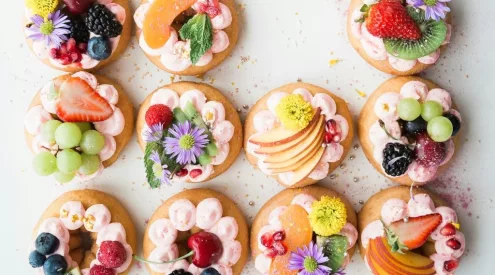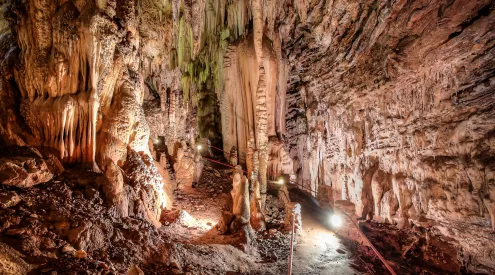For nine months of the year Namaqualand is a dry, dusty semi-desert, scattered liberally with granite boulders and largely devoid of colour.
But just below the soil lie the seeds of a pageant of colour, awaiting nature’s signal to burst into riotous fields of blooms.

Unbounded wild flowers spill over into towns, along highways and through fields. Image: Getty Images
It’s a fickle exhibition, dependent on the timing and volume of winter rain to decide how many and which floral species will poke their heads out. The true brilliance is revealed when you step closer.
In the details of those rolling flower beds, you’ll find 3, 000 species of plant, of which half are found only in this region, and 40 ,000 seeds in just one square metre – yes, metre.
You’ll also learn that you’re standing in one of South Africa’s three biodiversity hotspots – and be alarmed to learn that 17 per cent of this flora is comprised of threatened species.
Namaqualand stretches beyond provincial borders. Two rivers, the Orange and Olifants, act as the markers. The wild daisies pop up in the Richtersveld and Namaqua national parks, Goegap Nature Reserve and Skilpad Wild Flower Reserve.
Get up close and personal with the flowers (but don’t squash them!) on scenic drives, walks or mountain biking. When you remember to look up once in a while, scan the skies for raptors or the horizon for gemsbok. Even the antelope tread more lightly here, as if they know something precious is afoot.
Plan your trip
Need to know
The Namaqualand Flower Route starts about five hours away from Cape Town by car; prime season is from roughly mid-July to September. You want to be around Kamieskroon, Garies, Springbok and Nieuwoudtville. Get flower updates on the West Coast Flower Hotline, 063 724 6204, and the Namaqualand Flower Line, 072 760 6019.
Stay here
Kamieskroon Hotel is close to the Namaqua National Park. Prices range from R550 per person sharing a hotel room and R120 per person sharing a campsite. Call 027 672 1614.
Feature image: Getty Images.


















